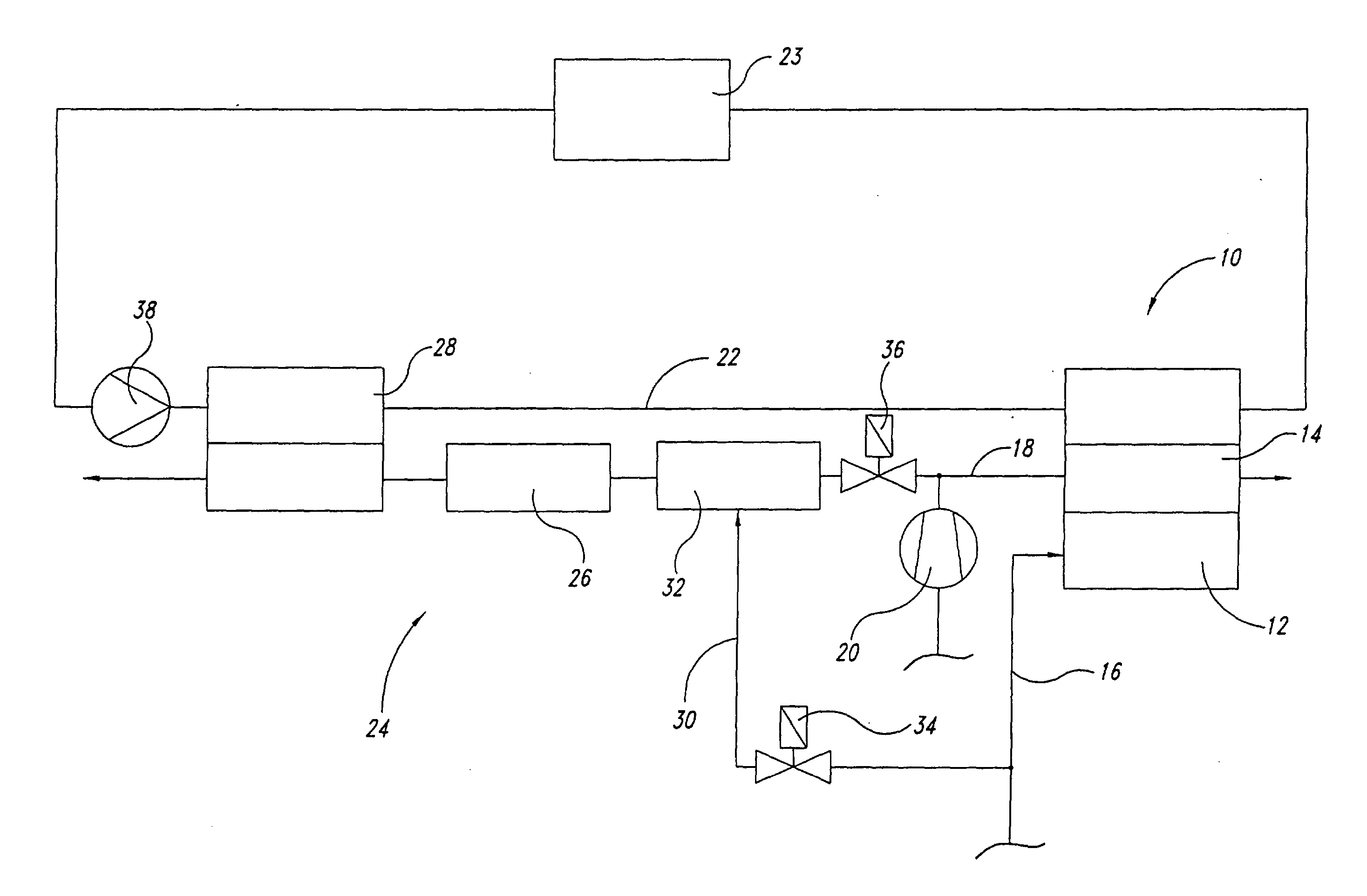Method to Cold-Start Fuel Cell System at Sub-Zero Temperatures
- Summary
- Abstract
- Description
- Claims
- Application Information
AI Technical Summary
Benefits of technology
Problems solved by technology
Method used
Image
Examples
Embodiment Construction
[0021] Referring to the Figure, a fuel cell stack 10 with one anode 12 and one cathode 14 are disclosed. Hydrogen is supplied to the anode 12 from a source (not shown) via a line 16. Via a line 18, the cathode 14 is supplied with oxygen in the form of air, which has been compressed by a compressor 20. In a manner known in the art, which for this reason will not be explained in more detail, the fuel cell stack 10 during its operation uses the supplied hydrogen and oxygen to produce power and water.
[0022] For the purpose of cooling the fuel cell stack 10 during its operation, the fuel cell stack 10 is connected in a heat-exchanging manner to a cooling loop 22, which uses a heat exchanger 23, which is arranged in the cooling loop 22 and is executed as a radiator, to dissipate the excess heat that is produced during the operation of the fuel cell stack 10. The cooling loop 22 also has a heat-exchanging connection to a heating device 24, which during a start-up phase supplies heat to th...
PUM
 Login to View More
Login to View More Abstract
Description
Claims
Application Information
 Login to View More
Login to View More - R&D
- Intellectual Property
- Life Sciences
- Materials
- Tech Scout
- Unparalleled Data Quality
- Higher Quality Content
- 60% Fewer Hallucinations
Browse by: Latest US Patents, China's latest patents, Technical Efficacy Thesaurus, Application Domain, Technology Topic, Popular Technical Reports.
© 2025 PatSnap. All rights reserved.Legal|Privacy policy|Modern Slavery Act Transparency Statement|Sitemap|About US| Contact US: help@patsnap.com


